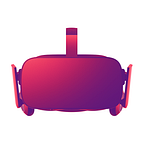Sticker Wars
The era of augmented reality is upon us. Headsets are improving dramatically, iOS and Android are both embarking on their own versions of the technology, and dancing hotdogs are immortalized in “art” — sorry, go back. Dancing hotdogs? Is this the best AR has to offer?
There are so many truly spectacular uses for augmented reality. On the industry side, we’re seeing incredible output and truly unique use cases. AR is being used for bomb disposal, training surgeons and planning complex surgeries, and remote access to trained professionals. We’re seeing AR drones bringing medical supplies to wartorn countries, and car showrooms being replaced by a set of goggles. But on the consumer side…
It’s pretty much still dancing hotdogs.
The news this week is full of declarations about the amazing awe-inspiring new technology out of Google: AR stickers. There are Stranger Things stickers! Star Wars stickers! Get your own before you get the mostly identical technology that’s been available for years from Snapchat!
…Yeah. The thing is, from a technology standpoint, what ARCore can accomplish with these augmented reality stickers is significantly different from what Snapchat and Facebook can do with sticker packs and filters. According to the Google Developer blog, ARCore uses three inherent technologies: virtual content with the real world as seen through your phone’s camera: Motion tracking allows the phone to understand and track its position relative to the world. Environmental understanding allows the phone to detect the size and location of flat horizontal surfaces like the ground or a coffee table. And light estimation allows the phone to estimate the environment’s current lighting conditions.
This sets it apart in some pretty distinct ways. Remember how Pokemon floated awkwardly around their environment? No more — ARCore knows what in the environment has depth and can interact three-dimensionally. Because it can sense light, it can also apply that light to the stickers it puts down, so they look like they’re really in the environment instead of on it. And of course being able to track its position relative to the rest of the room means you can shift your phone closer or farther away and the stickers will respond accordingly, instead of just floating backwards and forwards in space.
But when you’re applying this fairly advanced technology to a bunch of sticker packs, the only thing it really means is: they look very pretty. Or, alternatively: they look slightly prettier than they looked before.
Making such a huge deal of augmented reality stickers misleads consumers into believing that a bunch of sticker packs is why we’ve been so excited about the possibility of augmented reality. It dumbs the technology down, and in the long run, waters down consumer expectations. They won’t be excited by the next big augmented reality reveal — because they’ve already got the stickers.
And they’re just okay.
Writtten by Wren Handman for www.hammerandtusk.com.
